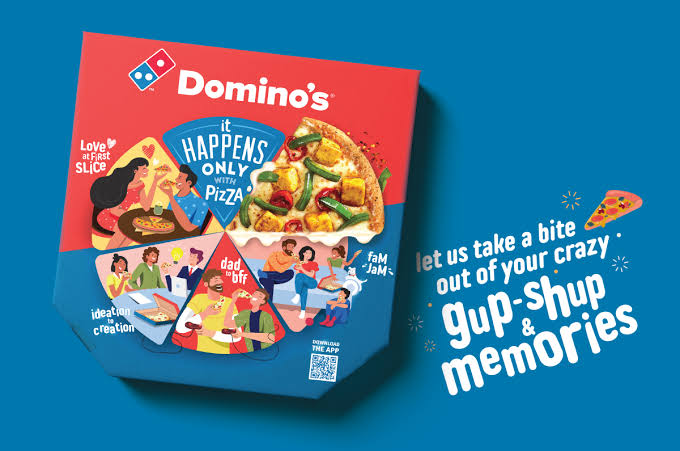My Blog
Domino’s India: A Deep Dive into its Marketing Strategy’s

Growing up, ordering pizza from Domino’s was an exciting treat! In college, it became the go-to option for its availability and affordability. Since entering India in 1996, this US-based global giant has become a staple in the Indian fast-food scene, boasting over 1,700 stores across 370+ cities. Let’s explore the strategies that made Domino’s a household name in India.
Initial Challenges and Adaptations
Cultural Adaptation
Domino’s faced several hurdles when it first set foot in India. The Indian palate is diverse, and pizza toppings needed to resonate with local flavors. Introducing paneer, tandoori chicken, and spicy sauces was a masterstroke, showcasing the brand’s glocalization strategy.
Vegetarian Dominance
Recognizing India’s significant vegetarian population, Domino’s created a robust vegetarian menu, which became a game-changer. This move demonstrated their understanding of local preferences and boosted their appeal.
Delivery Infrastructure
Ensuring timely delivery in a country with chaotic traffic and varied addresses was no small feat. The iconic “30 minutes or free” guarantee was both a marketing strategy and a logistical challenge, gaining immense traction and setting Domino’s apart.
Traditional Marketing Strategies
While Domino’s in India has heavily invested in digital marketing, they haven’t neglected traditional marketing strategies completely. Here’s a breakdown of some key traditional marketing tactics they employ:
Hoardings and Banners
Strategic Placement: Billboards, hoardings, and banners are strategically placed in high-traffic areas near stores or residential neighborhoods. These visuals often feature mouthwatering pizza images and promotional offers.
Building Brand Awareness: These traditional methods serve to increase brand awareness, especially in areas with limited internet access.
Print Advertising
Newspapers and Magazines: Domino’s utilizes print media advertising in newspapers or local magazines, particularly during festive seasons or weekends when pizza consumption is likely to be higher.
Targeted Reach: Print ads can be targeted to specific demographics depending on the publication chosen. For example, Domino’s might advertise in a family magazine with a vegetarian pizza offer.
In-Store Promotions
Signage and Displays: In-store signage and displays promote ongoing deals, new menu items, or combo offers.
Upselling and Cross-Selling: Displays near the checkout counter encourage adding side dishes or purchasing beverages.
Digital Dominance
Multi-Platform Approach
Domino’s India harnesses the power of various digital platforms to engage with its audience:
Social Media: Active on Facebook, Instagram, Twitter, and YouTube, Domino’s connects with pizza lovers, shares enticing visuals, and runs interactive campaigns. Influencer marketing, like collaborations with celebrities, further boosts their reach.
Mobile Apps: Their user-friendly mobile app enables seamless pizza ordering, customization, delivery tracking, and exclusive offers.
Making Pizza Ordering Easy and Interactive
Customization: The digital platform lets customers build their pizzas from scratch, selecting crusts, toppings, sauces, and sides.
Visual Menus: High-resolution images of menu items entice customers to place orders.
Interactive Promotions: Contests, quizzes, and polls on social media engage users and keep them excited about pizza.
Hassle-Free Ordering and Delivery
Efficient Delivery Mechanisms: Domino’s streamlined delivery process ensures quick access with strategically placed outlets. Their delivery staff is trained for speed and accuracy.
Order Tracking: Real-time order tracking adds to the excitement and reliability of the service.
Reliability and Speed: Domino’s reliability and speed have transformed them from just a pizza chain to a dependable food delivery service. Their “30 minutes or free” guarantee, even if not always met, builds trust and customer loyalty.
Conclusion
Domino’s success story in India showcases a deep understanding of the market. The familiar red-and-blue logo has found a special place in the hearts (and stomachs) of millions of Indians. Their focus on convenience, speed, and deliciousness has made them a trusted partner in celebrations, movie nights, and everyday indulgences.
Looking ahead, Domino’s is well-positioned to maintain its dominance in the Indian market by continuing to innovate, leverage data for targeted marketing, and prioritize customer experience.
Key Takeaways from Domino’s India’s Marketing
- Understand Cultural Preferences and Adapt Accordingly: Cater to local tastes and dietary preferences.
- Focus on Convenience, Speed, and Reliability: Ensure quick and reliable service.
- Use Both Traditional and Digital Marketing Channels: Reach a wider audience through diverse marketing strategies.
- Offer Seamless Ordering and User-Friendly Interfaces: Provide an easy and enjoyable customer experience.
By following these strategies, brands can thrive in a competitive market and reach a broader audience.
